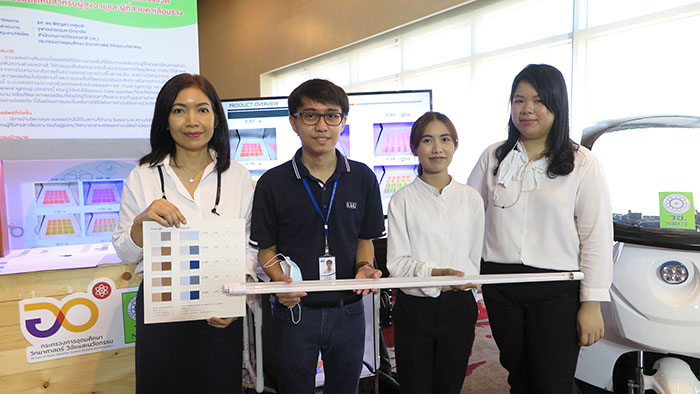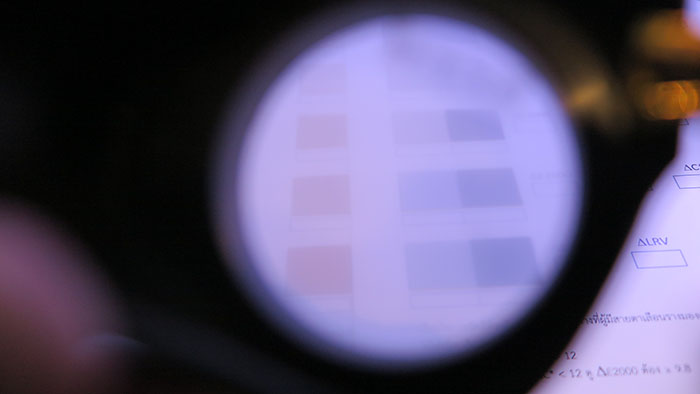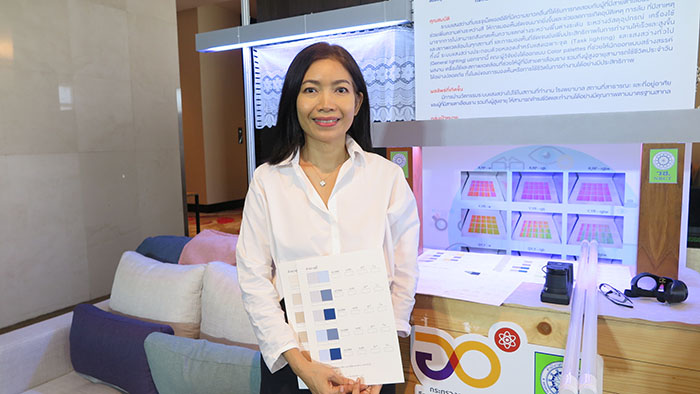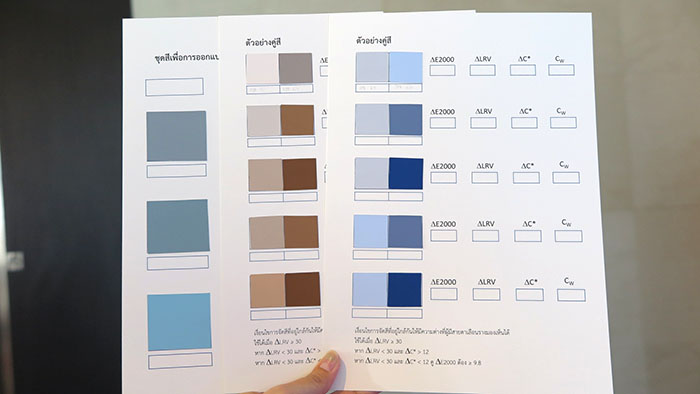Newswise — Smart LED light bulbs for the elderly, the latest innovation from Chula and its partners, can do more than emitting light. They enhance the contrast among the primary colors of light thereby improving visibility and reducing accidents in the elderly. The product is expected to hit the market in May.
If members of your household, especially the elderly, frequently stub and bruise their toes, knees, or shoulders on doors and furniture, do not be too quick to conclude that it is because of their absent-mindedness, or the clutter around them. The culprit may be poor lighting in your home.
“Older people and those suffering from low vision have difficulty distinguishing the contrast of objects’ surface or uneven pathway, and often trip and fall, “explained Assoc. Prof. Dr. Pichayada Katemake, a representative of the research team from the Department of Imaging and Printing Technology, Chula Faculty of Science, about the rationale behind the ” Living Innovations to Improve Visibility in Seniors and People with Low Vision“ research project supported by the National Research Council of Thailand (NRCT).

The research team from the Department of Imaging and Printing Technology, Faculty of Science
Researchers from various disciplines within Chulalongkorn have been collaborating in this project, namely the Department of Imaging and Printing Technology, Faculty of Science; the Department of Electrical Engineering, Faculty of Engineering; and the Department of Housing, Faculty of Architecture with support from the partners, i.e. the Faculty of Medicine, Metta Pracharak Hospital and Lighting & Equipment PCL.
“Our research found that ‘white light’ — a combination of three-color wavelengths: red, green, and blue can enhance the contrast of different surfaces enabling the elderly and people with low vision to see more clearly and move around with more agility. It also gives brighter white light that amplifies the contrast between certain pairs of colors as well.

The findings lead to the development of the smart LED lightbulbs of the future, now ready for the public, that transcends the visual limitations of these vulnerable groups.
“We have successfully manufactured long LED bulbs and are now expanding our product lines to other types of bulbs. A field test is scheduled in May 2021 at the Vision Rehabilitation Center, Metta Pracharak Hospital, and the housing for low-vision people. The field test will be in line with the ethical research process to ensure safety.”
In addition to the smart light bulb project, Assoc. Prof. Dr. Pichayada also elaborated on other projects that are currently under development, such as a vision-simulating application for people with low vision. (The Rehabilitation of Disabled Persons Act 2534 B.E. defines people with low vision as those with only 20-feet of visibility compared to 70 feet in people with normal vision).

Assoc. Prof. Dr. Pichayada Katemake
Department of Imaging and Printing Technology, Faculty of Science
“This application simulates low-vision visibility and allows designers to see through that vision, complete with the blind spots, so they can select appropriate colors with noticeable dimensionality and contrasts. The app uses the mobile phone camera to photograph desired areas, so that designers can create safe furniture and home appliances for all ages,” Assoc. Prof. Dr. Pichayada added.
Also under development is Guide Light – an innovative night light with revolutionized color mix and brightness that does not disrupt the elderly’s sleep when they need to get up to go to the bathroom in the middle of the night. The color palette, combo, and brightness threshold, as well as saturation and contrast values, are chosen for high visibility, with clear indicators on the color values and matching criteria. This is perfect for home appliance designers — another alternative product for families with elderly or people with low vision.

